Table of Contents
In this article, we’re discussing the Nvidia RTX 5000 Blackwell mobile platform that you will find in a multitude of all-around, worksation and gaming laptops over the next 2-3 years, and particularly focus on the top-tier GPU options, the GeForce RTX 5080 and RTX 5090.
We’ll go over the mid-tier 5070 and 5070Ti GPus more in-depth in a separate article, and then we’ll follow up on the entry-tier RTX 5060/5050 graphics chips later in the year, when available.
First, we’ll touch on the particularities of the Blackwell platform and how these 5080/5090 Laptop chips compare to their 4080/4090 Laptop predecessors, with a hint of what to expect in general performance in workloads and games.
And then we’ll list the devices that offer this hardware today, both the multitude of full-size full-performance models and the few thin-and-light portable variants announced so far.
Nvidia RTX Blackwell 5090 and 5080 mobile graphic chips explained
Here’s a brief preview of the entire range up of mobile RTX 5000 chips released so far, from the 5070 to the 5090, all based on the Blackwell Architecture and various GB2xx GPU chips.
| GeForce RTX 5090 Laptop |
GeForce RTX 5080 Laptop |
GeForce RTX 5070Ti Laptop |
GeForce RTX 5070 Laptop |
|
|---|---|---|---|---|
| GPU Chip | GB203, TSMC 4N | GB203, TSMC 4N | GB205, TSMC 4N | GB206, TSMC 4N |
| CUDA Cores (ALUs) | 10496 | 7680 | 5888 | 4608 |
| GPU Power (W) + Dyn Boost |
95 – 150 W + 25W | 80 – 150 W + 25W | 60 – 115 W + 25W | 50 – 100 W + 15W |
| Memory | 24 GB GDDR7 | 16 GB GDDR7 | 12 GB GDDR7 | 8 GB GDDR7 |
| SMs | 82 | 64 | 50 | 36 |
| TMUs | 328 | 256 | 200 | 144 |
| ROPs |
128 | 96 | 64 | 48 |
| Tensor/AI Cores | 328, 5th Gen | 256, 5th Gen | 200, 4th Gen | 144, 3rd Gen |
| RT Cores | 82, 4th Gen | 64, 4th Gen | 50, 3rd Gen | 36, 2nd Gen |
Much like in the past, the 90 and 80 series GPUs are significantly more powerful than the mid-tier 70 units, with more CUDA, Tensor and RT Cores, as well as more memory.
As mentioned earlier, we’re discussing the upper-tier GPUs in this article, the 5080 and 5090. Here’s how these two compare in general specs to the previous mobile RTX 4000 and RTX 3000 chips.
| GeForce RTX 5090 Laptop |
GeForce RTX 4090 Laptop |
GeForce RTX 5080 Laptop |
GeForce RTX 4080 Laptop |
GeForce RTX 3080Ti Mobile |
|
|---|---|---|---|---|---|
| GPU Specs: | |||||
| CUDA Cores (ALUs) | 10496 | 9728 | 7680 | 7424 | 7424 |
| Clock Speeds (Boost, MHz) |
?? | 1455 – 2040 MHz | ?? | 1350 – 2280 MHz | 810 – 1590 MHz |
| GPU Power (W) + Dyn Boost |
95 – 150 W + 25W | 80 – 150 W + 25W | 80 – 150 W + 25W | 80 – 150 W + 25W | 80 – 150 W + 25W |
| Memory Specs: | |||||
| Memory | 24 GB GDDR7 | 16 GB GDDR6 | 16 GB GDDR7 | 12 GB GDDR6 | 8/16 GB GDDR6 |
| Memory Clock | 2000 MHz, 32 Gbps effective |
2000 MHz, 16 Gbps effective |
2000 MHz, 32 Gbps effective |
2000 MHz, 16 Gbps effective |
2000 MHz, 16 Gbps effective |
| Memory Bus | 256-bit | 256-bit | 256-bit | 192-bit | 256-bit |
| Memory Bandwidth | ?? | 576 GB/s | ?? GB/s | 384 GB/s | 512 GB/s |
| Technology: | |||||
| GPU Architecture | Blackwell | Ada Lovelace | Blackwell | Ada Lovelace | Ampere |
| GPU Chip | GB203, TSMC 4N | AD103, TSMC 4N | GB203, TSMC 4N | AD104, TSMC 4N | GA103, Samsung 8nm |
| Tensor/AI Cores | 328, 5th Gen | 320, 4th Gen | 256, 5th Gen | 232, 4th Gen | 232, 3rd Gen |
| RT Cores | 82, 4th Gen | 80, 3rd Gen | 64, 4th Gen | 58, 3rd Gen | 58, 2nd Gen |
| SMs | 82 | 76 | 64 | 58 | 58 |
| TMUs | 328 | 320 | 256 | 232 | 232 |
| ROPs |
128 | 112 | 96 | 80 | 96 |
| DLSS | DLSS 4, w/ MFG | DLSS 3, 3.5 | DLSS 4, w/ MFG | DLSS 3, 3.5 | DLSS 2 |
| Encoder | 3x 9th gen | 2x 8th Gen | 2x 9th gen | 2x 8th Gen | 7th Gen |
| Decoder | 2x 6th gen | 5th Gen | 2x 6th gen | 5th Gen | 5th Gen |
This generation of Nvidia mobile chips are built on Blackwell 2.0 silicon, with the GB203 chip implemented on the 5090 and 5080 mobile graphics units.
That means there’s none of the larger GB202 chip offered with the 5090 desktop GPU, hence the Laptop version is smaller and with more limited specs in comparison. That’s no surprise, though, given the desktop 5090 is a power hog and an extremely expensive chip, while the mobile chips only go up to 175W of TGP with Dynamic Boost. That’s half to one-third of what the desktop chips draw from the wall.
At the same time, since this hardware is still built on the same TSMC 4N lithography as the Ada Lovelace RTX 4000 chips, it doesn’t benefit from the generational uplifts seen in the past, when transitioning to a more advanced build process. Hence, both the the 5090 and 5080 GPUs only offer tiny increases in CUDA, RT and Tensor cores over their predecessors, of up to 10%.
However, these chips benefit from more and significantly faster memory, with 24 GB GDDR7 on the 5090 and 16 GB GDDR7 on the 5080. The media engines see a generational update as well.
Overall, performance gains, in general, should be modest in most graphics loads for these Blackwell chips, with more notable gains in applications and workloads that benefit from the updated memory.
For games, I’d expect most improvements at 4K resolution, with limited gains in framerates at QHD resolution and lower; but at the same time, I expect these chips to struggle running the latest titles at 4K with max graphics settings, something to keep in mind if you decide on getting a laptop with a 4K display this year, from the many 18-inch variants available.
However, DLSS is going to play a major role with this generation, with the RTX 5000 chips offering support for DLSS 4.0 and MFG – Multi Frame Generation. DLSS 4.0 replaces the AI models used for the DLSS 3.5 technologies (Super Resolution, DLAA, Frame Generation, Ray Reconstruction, Reflex) with a new generation of so called Transformer AI technologies – these technologies support previous-gen RTX chips as well, but MFG is only offered on the RTX 5000 series. This is supposed to use AI to generate up to 3x extra frames per rendered frame (instead of 1x extra frame with previous-gen FG), and requires hardware technologies only offered with the Blackwell chips.
We’ll need to test these in real life to determine these technologies’ overall worth. However, the results are impressive based on what we see in the desktop 5080/5090 implementations. But I must stress again that those are quite a lot more powerful, especially the desktop 5090 built on the GB202 chip.
Still, it goes without saying that it’s somewhat awkward to see these Blackwell chips having to rely on software for any significant performance boosts in games, unlike what we experienced with past generational updates of RTX Laptop graphics chips. Strictly for rasterization, the gains in games between the two platforms is probably around 10% or even less, so if you already have a solid laptop with RTX 4000 graphics, you might want to hold on it instead of upgrading to a 2025 model, unless you’re upgrading for other specific reasons.
Nonetheless, I look forward to testing the RTX 5090 and RTX 5080 chips in a handful of laptops over the next few weeks and will update the article with our findings after the embargoes. Stay tuned for that.
— updating
In the meantime, let’s get to the next section of the article, the lists of laptops built on these Blackwell RTX 5000 chips.
Thin-and-light ultraportables with Nvidia RTX 5090 or RTX 5080 graphics
This first section includes the more portable notebook formats available with RTX 5080/5090 graphics, alongside recent hardware from Intel or AMD.
The Asus ROG Zephyrus G14 stands out between the available options, as the most compact and lightweight, but it only offers a MaxQ GPU implementations and can be specced up to an RTX 5080 110W in this refreshed 2025 generation.
The other models are compact and still portable 16-inchers, the MSI Stealth A16 and the brand new 2025 Razer Blade 16. The Blade in particular seems to implemens quite a powerful RTX 5090 at up to 155W TGP, which is close to the full-power variants in larger devices.
Of course, you’ll want to look into reviews with these thin-and-light options, and understand and accept their actual performance compared to what the 5080/5090 chips can deliver in full-size chassis, as well as the thermals and noise outputs of each unit.
| Asus ROG Zephyrus G14 GA403W | 14-inch 16:10 2.8K 120Hz OLED glossy non-touch | Ryzen AI 9 HX 370, max 64 GB LPDDR5x RAM |
up to RTX 5080 110W, with MUX | 3.5 lbs / 1.55kg | |
| premium 14-inch all-purpose and gaming laptop, all metal chassis in silver or grey; slightly thicker and heavier than the 2024 G14 model, but more powerful; RGB keyboard and large glass touchpad; lots of IO; 14-inch 16:10 OLED display with 2.8K 120Hz panel, with GSync; several configurations, up to Ryzen AI 9 HX 370 with up to Nvidia GeForce RTX 5080 16GB Laptop dGPU (up to 110W TGP), up to 64 GB RAM LPDDR5X onboard, single M.2 SSD storage; tri-fan cooling design, liquid metal; 90 Wh battery, 200W charger, 6x speakers |
|||||
| Price: tba in Q1 2025 | |||||
| MSI Stealth A16 AI+ | 16-inch 16:10 IPS 2.5K 240Hz matte | up to Ryzen AI 9 HX 370, max 32 GB LPDDR5x RAM |
up to RTX 5090 115W, with MUX | 4.6 lbs / 2.1 kg | |
| premium and lightweight 16-inch creator laptop, metal build; IPS QHD 240Hz display; RGB keyboard; 2025 updatred specs with AMD Ryzen AI 300 hardware and RTX 5000 graphics, onboard RAM, 2x SSD; 99Wh battery, 240W charger, 6x speakers. |
|||||
| Price: – | |||||
| Razer Blade 16 | 16-inch 16:10 OLED 2.5K 240Hz glossy | Ryzen AI 9 HX 370, max 64 GB LPDDR5x RAM |
up to RTX 5090 155W, MUX | 4.85 lbs / 2.2 kg | |
| new premium 16-inch all-purpose laptop, metal build, ultra-thin design; per-key RGB backlit keyboard; good IO; 16:10 OLED display with 2.5K 240Hz 100% DCI-P3 panel, with GSync; several configurations, Ryzen AI 9 HX 370 with up to Nvidia GeForce RTX 5070 24GB Laptop dGPU (up to 155W TGP ??), up to 64 GB RAM LPDDR5X onboard, 2x SSD storage; updated vapor-chamber cooling with rear heatsinks; 6x speakers 90 Wh battery |
|||||
| Price: tba in Q1 2025 | |||||
Full-size full-performance RTX 5090 and 5080 notebooks
This section gathers all of the available options with a full-power Nvidia GeForce RTX 5080 or 5090 running at 175W with Dynamic Boost.
The majority of these options are full-size 16 and 18 inch notebooks, with representatives from almost all major brands. Each of the laptops in this list is worthy of attention, but with their own particularities that you will find in detailed reviews and will help you decide on the best choice for your needs and budget.
Among these, the MSI Titan 18 still stands out of the crowd with its 4K mini LED display, excellent cooling, and premium metal build, but it still costs an arm and a leg; so perhaps you should also closely look into other options, such as the Asus ROG Scar 18/16, the brand new Lenovo Legion Pro 7i and HP Omen Max 16, as well as the Clevo-based Schenker Key 18 Pro and XMG Neo 16 chassis.
| Model | Screen | Hardware (*up to) | Graphics (*up to) | Weight | |
| Acer Predator Helios 16 AI | 16-inch 16:10 OLED, glossy 2.5K 240Hz 1ms |
Intel Core Ultra 275HX, 2x DDR5 slots, 2x SSDs |
GeForce RTX 5090 (175W), MUX |
from 6 lbs / 2.73 kg |
|
| premium full-size performance and gaming chassis, all-metal build, Predator design elements and RGB elements; 16:10 OLED 2.5K 240Hz 1ms panel, glossy; per-key RGB keyboard with mechanical switches for WASD and arrow keys; good IO – most ports on the back edge, including Thunderbolt 5; WiFi 7; dual-fan cooling with quad-exhausts, multiple heatpipes; 90 Wh battery, 330W charger, 4x speakers, 2MP IR camera |
|||||
| Price: – | |||||
| Acer Predator Helios 18 AI | 18-inch 16:10 mini LED, matte 4K 120Hz 7ms |
Intel Core Ultra 275HX, 2x DDR5 slots, 2x SSDs |
GeForce RTX 5090 (175W), MUX |
from 7.1 lbs / 3.2 kg |
|
| 18-inch variant of the Helios 16, with 6x speakers and slightly beefed up cooling, premium full-size performance and gaming chassis, all-metal build, RGB elements; 16:10 mini LED 4K 120Hz 7ms panel, matte 99Wh battery, 400W charger, 6x speakers, 2MP IR camera |
|||||
| Price: – | |||||
| Alienware 16 Area 51 | 16-inch 16:10 IPS, matte 2.5K 240Hz 3ms |
Intel Core Ultra 275HX, 2x DDR5 slots, 3x SSDs |
GeForce RTX 5090 (175W), MUX |
up to 7.6 lbs / 3.45 kg |
|
| premium full-size performance and gaming chassis, all-metal build, Alienware design elements and RGB elements; 16:10 IPS 2.5K 240Hz 3ms panel, matte – no miniLED or OLED option; per-key RGB keyboard with optional Cherry MX low-profile mechanical switches; optional RGB glass touchpad; good IO, mostly on the back edge, including Thunderbolt 5; WiFi 7; updated dual-fan cooling with quad-exhausts, multiple heatpipes; 96 Wh battery, up to 380W charger, 4x speakers, 2MP or 8 MP IR camera |
|||||
| Price: from $1999 | |||||
| Alienware 18 Area 51 | 18-inch 16:10 IPS, matte 2.5K 300Hz 3ms |
Intel Core Ultra 275HX, 2x DDR5 slots, 3x SSDs |
GeForce RTX 5090 (175W), MUX |
up to 9.8 lbs / 4.46 kg |
|
| larger 18-inch variant of the Alienware 16, 16:10 IPS 2.5K 300Hz 3ms panel, matte; 2.5H Lan port only on this 18-inch model |
|||||
| Price: from $2199 | |||||
| Asus ROG Strix Scar 16 | 16-inch 16:10 mini LED, matte 2.5K 240Hz 3ms |
Intel Core Ultra 275HX, 2x DDR5 slots, 2x SSDs |
GeForce RTX 5090 (175W), MUX |
from 6.3 lbs / 2.85 kg |
|
| premium full-size performance and gaming chassis, all-metal build, ROG design elements and RGB elements; 16:10 mini LED 2.5K 240Hz 3ms panel, matte; per-key RGB keyboard without NumPad; glass touchpad; good IO – all on the sides, including Thunderbolt 5; WiFi 7; updated tri-fan cooling with rear heatsink and vapor chamber + heatpipes; 90 Wh battery, up to 380W charger, 4x speakers, 2MP IR camera |
|||||
| Price: from $2499 | |||||
| Asus ROG Strix Scar 18 | 18-inch 16:10 mini LED, matte 2.5K 240Hz 3ms |
Intel Core Ultra 275HX, 2x DDR5 slots, 2x SSDs |
GeForce RTX 5090 (175W), MUX |
from 7.7 lbs / 3.5 kg |
|
| our detailed review of the Scar 18, Ultra 9 + RTX 5090 configuration; 18-inch version of the Scar 16, with larger chassis and slightly beefed-up cooling; keyboard with NumPad section; same other features and specs as the Scar 16 |
|||||
| Price: from $2599 | |||||
| Asus ROG Strix G16 | 16-inch 16:10 IPS, matte 2.5K 240Hz 3ms |
Intel Core Ultra 275HX, 2x DDR5 slots, 2x SSDs |
GeForce RTX 5080 (175W), MUX |
from 6 lbs / 2.73 kg |
|
| mid-tier full-size performance and gaming chassis, a more basic version of the Scar 16, lighter weight and with less RGB; 16:10 IPS 2.5K 240Hz 3ms panel, matte – mini LED only on the Scar; 4-zone or per-key RGB keyboard without NumPad; glass ?? touchpad; good IO – all on the sides, including Thunderbolt 5; WiFi 7; lower power than the Scar, and mostly offered with 5070 115W or 5070Ti 140W graphics; updated tri-fan cooling with rear heatsink and heatpipes (vapor chamber only on the Scars); 90 Wh battery, up to 380W charger, 4x ?? speakers, 2MP IR camera |
|||||
| Price: – | |||||
| Asus ROG Strix G18 | 18-inch 16:10 IPS, matte 2.5K 240Hz 3ms |
Intel Core Ultra 275HX, 2x DDR5 slots, 2x SSDs |
GeForce RTX 5080 (175W), MUX |
from 7.54 lbs / 3.42 kg |
|
| 18-inch version of the Strix G16, with larger chassis and slightly beefed-up cooling; keyboard with NumPad section; same other features and specs as the Strix G16, but with the larger cooling, there’s a better change you can find this with a 5080 than on the more compact variant |
|||||
| Price: – | |||||
| Eurocom Raptor X18 | 18-inch 16:10 IPS 2.5K 240Hz or 4K 200Hz |
Intel Core Ultra 275HX, 4x DDR5 slots, 4x SSDs |
GeForce RTX 5090 (175W), MUX |
from 7.9 lbs / 3.6 kg |
|
| full-size gaming/performance chassis, aluminum-magnesium build; per-key RGB keyboard, IPS 4K 200Hz or QHD 240Hz display; good IO, including Thunderbolt 5, 2x 2.5G Lan; highly configurable, up to Core Ultra 275HX with up to RTX 5090 graphics, 4x RAM, 4x SSDs; dual-fan quad-exhausts multiple-heatpipes cooling; 98Wh battery, 330W charger or optional 780W charger for Extreme Performance ??, 4x speakers, 5 MPx camera |
|||||
| Price: from $4259 | |||||
| HP Omen Max 16 | 16-inch 16:10 IPS or OLED 2.5K 240Hz 3ms |
Intel Core Ultra 275HX, 2x DDR5 slots, 2x SSDs |
GeForce RTX 5080 (??W), MUX |
from 5.92 lbs / 2.7 kg |
|
| premium full-size performance and gaming chassis, all-metal build, black or white colors, Omen design elements and RGB elements; 16:10 IPS matte 2.5K 240Hz 3ms panel, or 16:10 OLED glossy 2.5K 240Hz 1ms; per-key RGB keyboard with NumPad, glass touchpad; good IO – most on the back edge; WiFi 7; dual-fan cooling with quad-exhausts, vapor chamber, “hyper cryo compound”; 83 Wh battery, 330W charger, 2x speakers, 2MP IR camera |
|||||
| Price: from $2699 | |||||
| Lenovo Legion Pro 7i | 16-inch 16:10 OLED, glossy 2.5K 240Hz 1ms |
Intel Core Ultra 275HX, 2x DDR5 slots, 2x SSDs |
GeForce RTX 5090 (175W), MUX |
from 2.72 lbs / 6 kg |
|
| premium full-size performance and gaming chassis, all-metal build, Legion design elements and RGB elements; 16:10 OLED 2.5K 240Hz 1ms panel, glossy; per-key RGB keyboard; glass touchpad; good IO – all ports on the sides, including Thunderbolt 5; WiFi 7; updated dual-fan cooling with rear exhausts and vapor chamber; 99 Wh battery, up to 400W charger, 4x speakers, 5MP camera |
|||||
| Price: from $2399 | |||||
| Lenovo Legion 9i 18 | 18-inch 16:10 IPS 4K 240Hz 3ms , matte | Core Ultra 9 275HX, 4x DDR5 slots, 4x SSDs |
up to RTX 5090 (175W), MUX |
from 7.8 lbs /3.5 kg |
|
| premium gaming/performance chassis; per-key RGB keyboard, 1.6 mm travel; IPS LED 4K 240Hz 3ms display or IPS 4K 3D with dual mode 4K 240Hz / 2K 440Hz (glassless 3D at 2K resolution); Intel Core Ultra 9 275HX with up to RTX 5090 graphics 175W, 280W total power at <48dBA, 4x RAM, 4x SSDs; quad-fan triple-exhaust cooling with vapor chamber, liquid metal; 5MPx camera, 6x speakers; 99Wh battery, 400W charger |
|||||
| Price: from $3999, 4499 EUR | |||||
| MSI Vector 16 HX AI | 16-inch 16:10 IPS, matte 2.5K 240Hz 3ms |
Intel Core Ultra 275HX, 2x DDR5 slots, 2x SSDs |
GeForce RTX 5080 (175W), MUX |
from 5.9 lbs / 2.65 kg |
|
| mid-tier full-size performance and gaming chassis, mostly plastic build, MSI design elements without RGB; 16:10 IPS matte displays, 2.5K 240Hz or 2K 144Hz panels; 24-zone RGB keyboard with NumPad; plastic touchpad; good IO – ports on backs and sides, with TB4; WiFi 7; dual-fan cooling with quad exhausts and heatpipes; 80 Wh battery, 24oW charger, 2x speakers, 2MP camera |
|||||
| Price: – | |||||
| MSI Vector A18 HX | 18-inch 16:10 IPS 240Hz 3ms matte | up to AMD Ryzen 9 9955HX, max 64 GB DDRD5 RAM |
up to GeForce RTX 5080 (175W) | 7.95 lbs / 3.6 kg | |
| mid-range full-size performance and gaming chassis, clamshell format; 16:10 IPS 2.5K 240Hz 3ms panel, matte; 26-zone RGB keyboard; several configurations, up to Ryzen 9 9955HX and RTX 5080 16GB, 2x DIMMs, 2x SSDs (one PCIe gen5); dual-fan quad-exhaust cooling; 99.9 Wh battery, 330W charger, 4x speakers, 2MPx camera |
|||||
| Price: tba | |||||
| MSI Raider 18 HX AI | 18-inch 16:10 IPS or mini LED, matte 2.5K 240Hz 3ms or 4K 120Hz 7ms |
Intel Core Ultra 285HX, 2x DDR5 slots, 3x SSDs |
GeForce RTX 5090 (175W), MUX |
from 7.8 lbs / 3.5 kg |
|
| premium full-size performance and gaming chassis, all-metal build, MSI design elements and RGB; hardware refresh of the 2024 model; a simplified version of the Titan, available in a wider range or specs and with a more affordable price; 16:10 matte display, either IPS or mini LED panels; per-key RGB keyboard, glass touchpad; excellent IO – ports on back and sides, including Thunderbolt 5; WiFi 7; dual-fan cooling with quad-exhausts and multiple heatpipes; 99 Wh battery, 400W charger, 6x speakers, 2MP IR camera |
|||||
| Price: from $2499 | |||||
| MSI Raider A18 HX | 18-inch 16:10 mini LED 4K 120Hz matte | up to AMD Ryzen 9 9955HX3D, max 96 GB DDRD5 RAM |
up to GeForce RTX 5090 (1750W) | 7.95 lbs / 3.6 kg | |
| premium-range full-size performance and gaming chassis, clamshell format; 16:10 mini LED 4K 120Hz 3ms panel, matte; per-key RGB keyboard; several configurations, up to Ryzen 9 9955HX3D and RTX 5090 24GB, 2x DIMMs, 2x SSDs (one PCIe gen5); dual-fan quad-exhaust 7-heatpipe cooling; 99.9 Wh battery, 400W charger, 4x speakers, 2MPx camera |
|||||
| Price: tba | |||||
| MSI Stealth A18 AI Studio | 18-inch 16:10 IPS or miniLED matte | up to Ryzen AI 9 HX 370, max 64 GB LPDDR5x RAM |
up to RTX 4090 150W, with MUX | 6.9 lbs / 2.9 kg | |
| premium and lightweight 18-inch creator laptop, metal build; IPS QHD 240Hz or mini LED 4K 120Hz display; RGB keyboard; various configurations, with AMD Ryzen AI 300 hardware and up to RTX 5090 graphics, 2x RAM, 2x SSD; vapor-chamber cooling; 99Wh battery, 280W charger, 6x speakers. |
|||||
| Price: – | |||||
| MSI Stealth 18 HX AI | 18-inch 16:10 IPS or mini LED, matte 2.5K 240Hz 3ms or 4K 120Hz 7ms |
Intel Core Ultra 275HX, 2x DDR5 slots, 1x SSDs |
GeForce RTX 5090 (150W), MUX |
from 6.4 lbs / 2.9 kg |
|
| premium portable all-round chassis, magnesium alloy build, MSI design elements without RGB; hardware refresh of the 2024 model; 16:10 matte display, either IPS or mini LED panels; per-key RGB keyboard, glass touchpad; excellent IO – ports on back and sides, including Thunderbolt 5; WiFi 7; dual-fan cooling with quad-exhausts and vapor chamber; 90 Wh battery, 280W charger, 6x speakers, 2MP IR camera |
|||||
| Price: from $2499 | |||||
| MSI Titan 18 HX AI | 18-inch 16:10 mini LED, matte 4K 120Hz 7ms |
Intel Core Ultra 285HX, 2x DDR5 slots, 4x SSDs |
GeForce RTX 5090 (175W), MUX |
from 8 lbs / 3.63 kg |
|
| premium full-size performance and gaming chassis, all-metal build, MSI design elements and RGB; full review of the 2025 Titan over here, hardware refresh of the 2024 model reviewed here, with slight internal updates; dedicated 18-inch chassis, unlike other models that are beefed up variants of their 16-inch versions; 16:10 mini LED 4K 120Hz 7ms panel, matte; per-key RGB keyboard with CherryMX Ultra-Low profile mechanical switches (some, not all keys), RGB glass touchpad; excellent IO – ports on back and sides, including Thunderbolt 5; WiFi 7; most powerful Ultra HX + RTX 5080/5090 implementation, at 270W crossload dual-fan cooling with quad-exhausts, vapor chamber, heatpipes; 99 Wh battery, 400W charger, 6x speakers, 2MP IR camera |
|||||
| Price: from $3499 | |||||
| Schenker Key 18 Pro | 18-inch 16:10 IPS or mini LED, matte | Intel Core Ultra 275HX, 4x DDR5 slots, 4x SSDs |
GeForce RTX 5090 (175W), MUX |
?? | |
| portable workstation chassis, new 2025 model, metal build; 16:10 IPS 2.5K or mini LED 4K panels; per-key RGB keyboard, with NumPad; glass touchpad; 4x RAM slots and 4x SSD slots, full-power HX+ RTX implementation; details on cooling to be updated; 98WH battery, 5MP camera, ??x speakers |
|||||
| tba | |||||
| XMG Neo 16 | 16-inch 16:10 IPS or mini LED, matte 2.5K 240Hz 3ms |
Intel Core Ultra 275HX or AMD Ryzen 9 9955HX3D, 2x DDR5 slots, 2x SSDs |
GeForce RTX 5090 (175W), MUX |
5.5 lbs / 2.5 kg | |
| mid-tier full-size performance and gaming chassis, clamshell Tongfang barebone format, metal build; 16:10 IPS or mini LED 2.5K 240Hz panel, matte, 180 hinge; per-key RGB keyboard, with NumPad and spaced arrows; glass touchpad; good IO – ports on back and sides; either AMD Fire Range Ryzen HX or Intel Arrow Lake Core Ultra 9 HX hardware, with up to RTX 5090 graphics, dual-fan quad-exhaust cooling with multiple heatpipes, compatibility with XMG OASIS external water cooler 99.8WH battery, 2x speakers |
|||||
| tba | |||||
| Razer Blade 18 | 18-inch 16:10 IPS, matte 4K 220Hz or 2K 440Hz |
Intel Core Ultra 275HX, 2x DDR5 slots, 2x SSDs |
GeForce RTX 5090 (175W), MUX |
from 7 lbs / 3.2 kg |
|
| premium somewhat portable performance and gaming chassis, all-metal build, Razer design elements and RGB; 16:10 IPS dual-spec – 4K+ 220Hz or FHD+ 440Hz panel, matte; per-key RGB keyboard ,glass touchpad; full power Ultra 9 HX + RTX 5080/5090 implementation; triple-fan cooling with quad-exhausts, vapor chamber; 92 Wh battery, 400W charger, 6x speakers, 5MP IR camera |
|||||
| Price: from $3499 | |||||
That’s about it for this article.
It’s a work in progress, though, and we’ll update it as new models with mobile Nvidia GeForce RTX 5090 and 5080 graphics chips are released, or once we get to review some of these.
In the meantime, get in touch in the comments section below with your thoughts on this Nvidia RTX Blackwell laptop hardware. And if you spot any notebook that should be listed in this article and isn’t yet, please let me know about it.

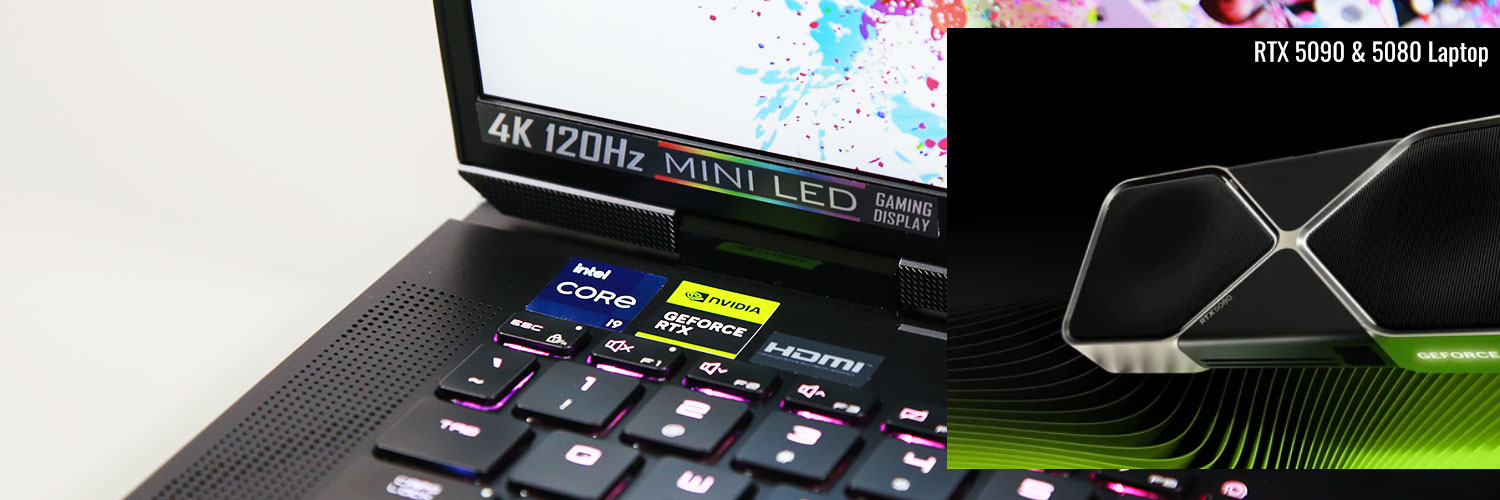
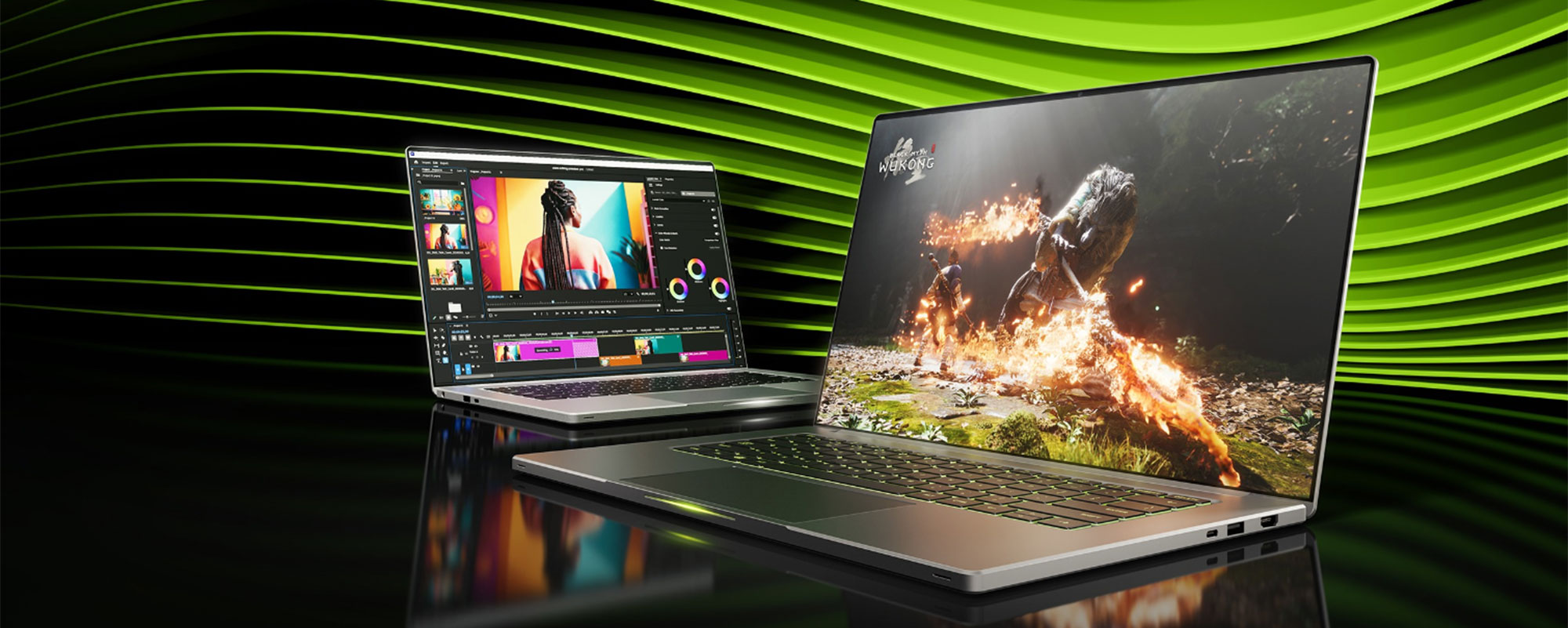


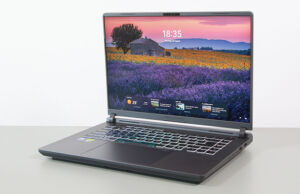
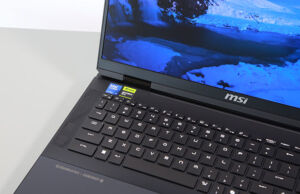
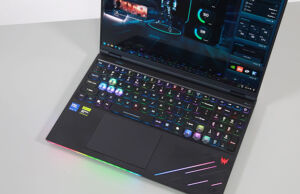
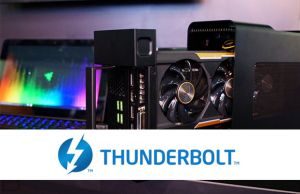
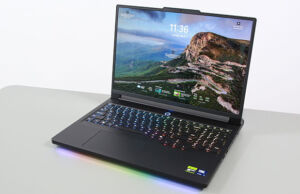
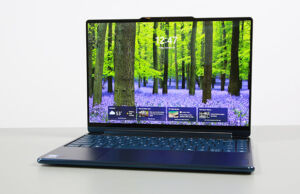

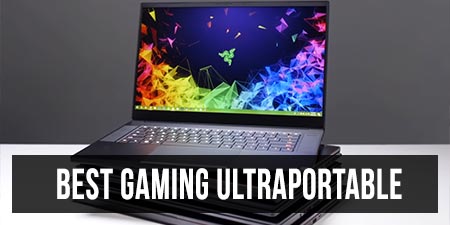
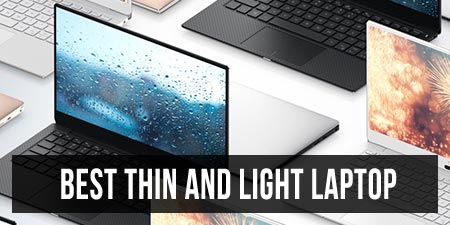
John
February 20, 2025 at 5:15 am
Will you be getting any models with 5080 and/or 5090 cards to review here soon? I noticed some sites are pre-ordering here soon. It would be nice to see the thermals and performance on them before buying, but I'm also nervous about supply.
Andrei Girbea
February 21, 2025 at 2:02 pm
yes, but reviews are under embargo for the time being.
John
February 21, 2025 at 3:42 pm
Can you share embargo dates? I can't find anything online.
Andrei Girbea
February 24, 2025 at 10:30 am
no, that is under nda as well, but expect a few more weeks at least
Peter
March 10, 2025 at 8:47 pm
Did yooi alreasy receive some of these notebooks for testing? Almost two weeks have passed since your comment rwgarsing NDA. Does it still holds true the "couple of weeks" statement?
Andrei Girbea
March 11, 2025 at 10:21 am
still true. Couple more weeks.
E
March 25, 2025 at 5:43 am
Kinda sad more and more laptop manufacturers are moving away from equipping their top-of-the-line models with 4 RAM slots (most notably MSI's Titan this year). With the single stick 64GB RAM becoming a reality we could finally load 256GB RAM into a laptop…
There's an Acer Predator SKU featuring 4 RAM slots but it sells for 5K pounds on preorder in UK. Would have loved 9955HX3D + 5090 + 256GB RAM combo but dunno if it's happening
George
March 30, 2025 at 5:16 pm
Eagerly awaiting your test results. From what I have heard, the decrease in power consumption has made the 5090 modestly better, and in some cases, worse the 5080.
At a difference of over $1K between the 2 models with all else being equal, if the 5090 mobile chip cannot produce at least a 10% solid increase, it seems like the 5080 might be a better choice. Battery life on each of these models may also be an interesting metric. I look forward to seeing the different run times. If that 10% costs 20% runtime, that's also something to consider.
I'm leaning heavily towards the Legion i7 Pro with the 5080 (mostly because I like the offset keys like Asus used to do), but this report may change my mind.
sentientCode
April 22, 2025 at 10:51 pm
Still no update?